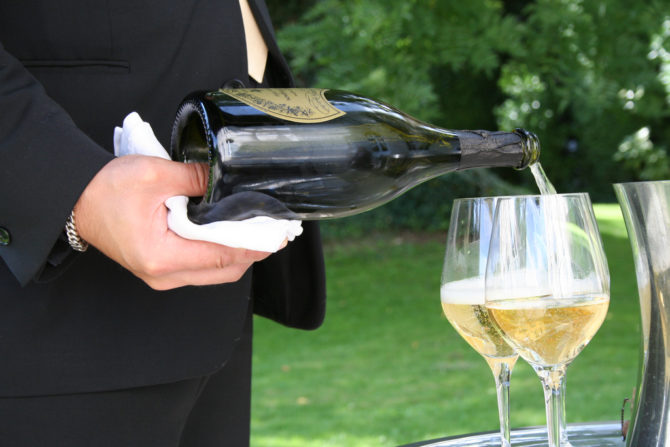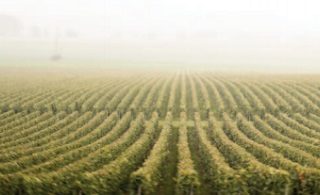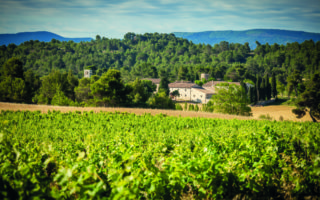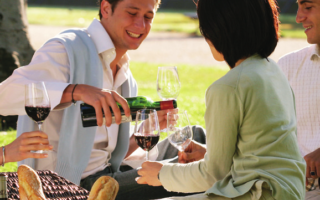Champagne Etiquette – Decoding the label

Understanding the label or etiquette on the Champagne bottle can help you navigate the shopping aisles to find the best match for your taste and budget.
1) The first clue is easy and is in the name itself. If it’s made in France and called Champagne it can only come from one of the villages approved to carry the name (AOC appelation d’origine controlé or AOP appelation d’origine protegé). It is also guaranteed to be produced according to a specific method or méthode champenoise.(The main characteristic of this method is the second fermentation in the bottle). There are more than 100 champagne houses and 15,000 smaller producers in Champagne. These companies manage some 32,000 hectares of vineyards in the region and employ more than 10,000 people.
2)A percentage point system for vineyards sorts the terrain in order of their potential to produce quality grapes considering their soil, sunshine aspect, slope and maturity. The distinction affects the price of the grapes they produce:
Grand cru (highest ranking, there are only around 17 of these)
Premier cru (next tier, around 44)
The rest are simply called Champagne
3) The label will also indicate the dosage or proportion of sugar per gram. There’s a range from the driest to the sweetest:
Extra brut (driest)
Brut
Sec
Demi-sec
Doux (sweetest)
4) The Champagne house or brand or the name and business structure of the producer.
NM for Négociant-Manipulant–makes the wine out of grapes bought from someone else
CM for Coopérative-Manipulant–same as above but a group of producers working together
RM for Récoltant-Manipulant–makes the wine from grapes from own vineyard
MA for Marque d’acheteur–a reseller of wine made by someone else
RC for Récoltant-Coopérateur–the wine is made by a cooperative and sold under the name of this one producer
5) The year or millésime when applicable-if it doesn’t indicate a year it’s a blend of different ones
6) The types of grapes used or cépages. Blanc de blancs refers to a white wine made from white grapes and refers to a champagne made entirely from chardonnay whereas ‘blanc de noirs‘ is made from dark grapes and refers to a champagne made from the Pinot Noir and/or the Pinot meunier only and is likely to be richer and fuller in style. A large proportion of rosé or pink champagne is made from the addition of red wine, and some select rosés are still produced by the saignée method of letting some skin from the dark varieties bleed into the otherwise all white wine. The production of red champagne is no longer allowed, the last known bottle was produced in the 17th century.
Other mentions are more marketing oriented and not so closely monitored. Here are three examples but you’ll see many other marketing words used:
Grande réserve: left to mature at least 15 months before going on the market
Tête de cuvée: made from the first juice produced during pressing
Coeur de cuvée: made from the second batch of juice
Many of the Champagne houses welcome visitors to discover how this famous wine is produced. Read more about the Champagne-Ardenne, a bountiful area of France.
Photo:Megan Lawrie Cole – Flickr
Share to: Facebook Twitter LinkedIn Email
More in businesses, champagne, people, shops, villages, vineyards, wine
Leave a reply
Your email address will not be published. Required fields are marked *




REPLY